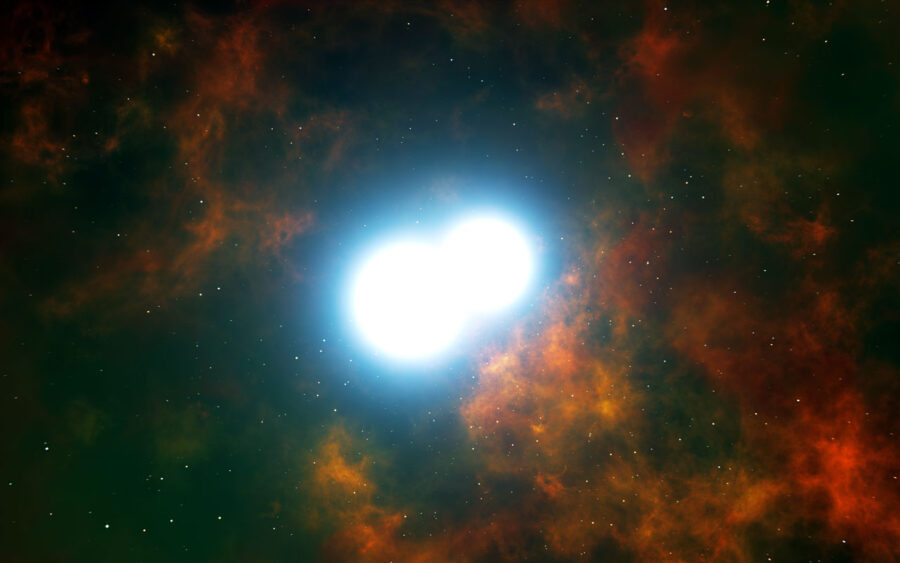A white dwarf pulsar, a dying star that has collapsed inward onto itself, has been found for only the second time in history.

A white dwarf pulsar, only the second ever discovered, has been found by a team of astronomers. This incredibly rare cosmic object spins over 300 times faster than Earth, which causes it to blast electrical particles and radiation at a nearby red dwarf star. This, in turn, leads to a pulsing effect that fades and brightens the entire system (via Space.com).
This white dwarf pulsar is an exciting and historic discovery for several reasons. Not only is it something that has only been discovered once before, but it also gives us an opportunity to research it with modern equipment and learn why it behaves the way it does. The activity that drives this pulsar is theorized to be incredibly powerful magnetic fields, but scientists don’t know for sure what causes them.
To put in perspective how powerful these magnetic fields are, University of Warwick Department of Physics researcher Ingrid Pelisoli explained that the magnetic fields of white dwarf pulsars could be as much as one million times stronger than the fields generated by our sun. Dynamo models are one potential explanation. Dynamos are essentially generators in cosmic bodies, like Earth that theoretically generate magnetic fields through a rotating, convecting, and electrically conducting fluid (such as Earth’s molten core).
Obviously, a dynamo in a white dwarf pulsar would be much more powerful than Earth’s, but this discovery could help scientists confirm that the dynamo model is indeed what is generating the fields around the pulsar. We still have a lot to learn about the evolution and life of stars, and this discovery could clear some of that up. Since these pulsars are particularly rare, observing this stage of a star’s life is an exciting opportunity.

A white dwarf pulsar forms when a smaller star collapses after running out of nuclear fuel. The core of these stars then succumbs to gravity, and the star’s outer shell expands into a red giant. Eventually, the star’s core will cool over many years and leave behind a white dwarf.
One day, about 4.5 billion years from now, our solar system’s sun will end its life as a white dwarf pulsar. While our sun certainly doesn’t seem small to us, compared to other stars, it is considered far from massive. Instead of becoming white dwarfs, especially massive stars go supernova at the end of their lives. This leads to these massive stars becoming neutron stars or black holes.
While our solar system might be a dying, empty place after our sun dies, some systems remain active after a star becomes a white dwarf pulsar. This is the case with this newly discovered one, which was dubbed J1912−4410. The team also discovered that this white dwarf was 23,000 degrees Fahrenheit, which is relatively cool for this star stage, meaning it’s fairly old.
The team could spot J1912−4410 by poring through data compiled through surveys looking at similar systems to the first discovered white dwarf pulsar in 2016, AR Scorpii (AR Sco). Hopefully, the team will be able to learn a lot about these white dwarfs from these two subjects. Also, maybe having this additional data will help them find more of them in the near future.
